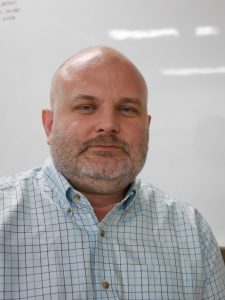This article features Prof. Gergely Juhasz, an Associate Professor in the Department of Chemistry.
What do you think about GSEP and who would be appropriate for GSEP?
GSEP is an undergraduate engineering program designed for international students. We offer English language courses, so students with limited Japanese skills can also join us. One unique point of GSEP lectures I teach is they are open to Japanese students, too. I found this aspect very important: such mixed classes are an excellent opportunity to make friends and it is a gentle way for the newcomers to get integrated into the university life.
Being an oversea student is a challenging role. I was an international graduate student myself, so I am familiar with many of these challenges. You come to a country where people have different educational background, different values and a language you don’t speak – if you want to be successful, you have to be flexible, proactive and industrious.
We see many bright students applying to us, but I think the ones with a proactive mindset will gain the most from GSEP. There are many people here who wants to help you, but it works the best if you actively reach out.
Could you tell us about your role in GSEP program (about your teaching/subject)?
I teach first year Chemistry. It is a brief overview of all main areas (Inorganic, Organic, and Physical Chemistry), so I try to give a good background to everyone who is interested in engineering and science. My main focus is chemical concepts and principles. We talk about a wide variety of topics and I show how Chemistry can give helpful insight. We have students with very different education history and interest, but I think it is very helpful to everyone to have a broader interdisciplinary understanding of how materials work.
Please tell us about your research.
I work in the field of computational chemistry. The main directions of my research are luminescence of modified carbon nanotubes and electrochemical reactions on fuel-cell electrodes. These topics are part of collaborative efforts with other laboratories targeting the development of new luminescent materials and fuel cells.
I perform simulations of these systems at the atomic level to figure out how chemical reactions or properties are related to the structure of the material. My collaborative partners are specialized in experiments; my calculations help us to understand the results of experiments, and design better materials.

